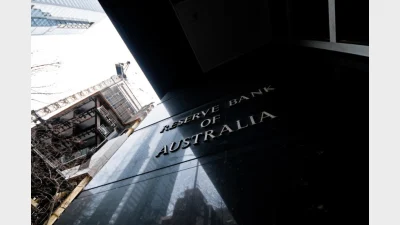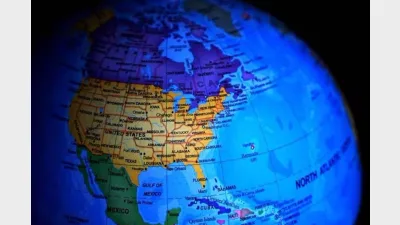RBA delivers latest rate decision



The Reserve Bank of Australia (RBA) has left the cash rate unchanged at 4.35 per cent for the sixth consecutive time, but noted the economic outlook remains “uncertain” and data has “reinforced the need to remain vigilant to upside risks to inflation”.
According to its statement, the RBA board is not ruling anything in or out.
“Inflation in underlying terms remains too high, and the latest projections show that it will be some time yet before inflation is sustainably in the target range,” the bank said.
“Data have reinforced the need to remain vigilant to upside risks to inflation and the board is not ruling anything in or out. Policy will need to be sufficiently restrictive until the board is confident that inflation is moving sustainably towards the target range.”
It flagged it will “continue to pay close attention to developments in the global economy and financial markets, trends in domestic demand, and the outlook for inflation and the labour market”.
“The board remains resolute in its determination to return inflation to target and will do what is necessary to achieve that outcome.”
The bank’s decision was in line with market expectations.
Commenting on the hold, CreditorWatch’s chief economist Anneke Thompson explained the decision followed a “reasonably positive” June quarter consumer price index (CPI) release.
“This RBA board will be reasonably comfortable that the cash rate at 4.35 per cent is having the required effect of cooling demand,” Thompson said.
“Demand has certainly cooled significantly in areas of discretionary retail and the café and restaurant sector. Retail trade quarterly volume data showed that the volume of retail goods sold per capita has fallen every quarter for eight quarters in a row.”
She said it appears the RBA “will be comfortable with inflation falling at a slower pace” and looking forward, in all likelihood, the central bank could begin to cut the cash rate before inflation gets back within the target band.
“This is because of the known lag effect of tightening monetary policy, and it will be very keen to not undo the remarkable gains in employment and the labour force over the last few years,” Thompson observed.
Earlier this week, GSFM investment strategist Stephen Miller also predicted the bank would keep the cash rate unchanged, although recent market volatility and concerns of an economic slowdown in the US could mean “a more neutral tone” from the RBA.
“I certainly don’t think the RBA will respond in any way to what we’re seeing, the maximum impact we can expect is that they might express overtly a neutral bias, whereas they’ve been reluctant to do that in the past,” Miller said.
“They hint at it, but sort of say, ‘We discussed an increase, but not a decline’, whereas it might be more even this time around. But I cannot see them cutting rates and I think it would be injudicious to do so.”
Could the RBA cut rates before 2025?
For Miller, rate cuts are likely to emerge in early 2025, although the investment strategist admitted it is not “implausible” to see one by year-end.
“If I had to pick a most likely time, it’s February 2025. The reason I say that is, again, the inflation numbers were not as bad as feared, but it’s a mistake to characterise them as good or benign in any way,” he said.
Meanwhile, a number of economists have suggested, following the latest CPI print, that the possibility of rate cuts by November might not be entirely off the table.
Gareth Aird, head of Australian economics at CBA, observed inflation is tracking exactly as the RBA forecast in the May statement on monetary policy.
“As such, we expect the RBA will leave the cash rate on hold at the upcoming August board meeting. Indeed, we now do not consider the meeting to be ‘live’,” Aird said.
“The wriggle room on the data configuration that would see the cash rate cut in November is still tight. And the risk clearly sits with interest rate relief not arriving until H1 25. But we believe the data continues to evolve in a way that sees the RBA cut the cash rate in November.”
Similarly, Westpac chief economist Luci Ellis described disinflation as “on track”, affirming the bank’s view of rates on hold till year-end.
“Given the subconsensus inflation outcome and the run of other data confirming that domestic demand growth is soft, we affirm our November call for the first rate cut, with more conviction than previously,” Ellis stated.
However, she pointed out the RBA board appears to be in no hurry to cut, given lingering inflation risks.
“It is plausible that the board will retain the ‘not ruling anything in or out’ language in its post-meeting communication,” she said.
“We also anticipate that rates will decline only gradually; we currently project that the RBA cash rate target will fall to 3.1 per cent by end-2025, and this is likely to be the trough.
“In 2026 and beyond, a period of above-average growth can be anticipated, so interest rates are unlikely to fall further from there.”
Recommended for you
The International Monetary Fund (IMF) has issued a sobering assessment of the global economic landscape in its latest World Economic Outlook, dramatically revised after Donald Trump’s 2 April announcement of sweeping tariff measures.
Growth from the listed company’s key businesses has propelled Generational Development Group to new milestones in the three months to 31 March.
Sharemarkets might have been rallying on the back of central banks’ progress in the inflation fight, if not for Donald Trump’s escalating trade tensions and renewed attacks on the US Federal Reserve, according to AMP’s chief economist Shane Oliver.
Super industry advocates are calling on all parties to prioritise stopping abusers from getting access to their victims’ super.













